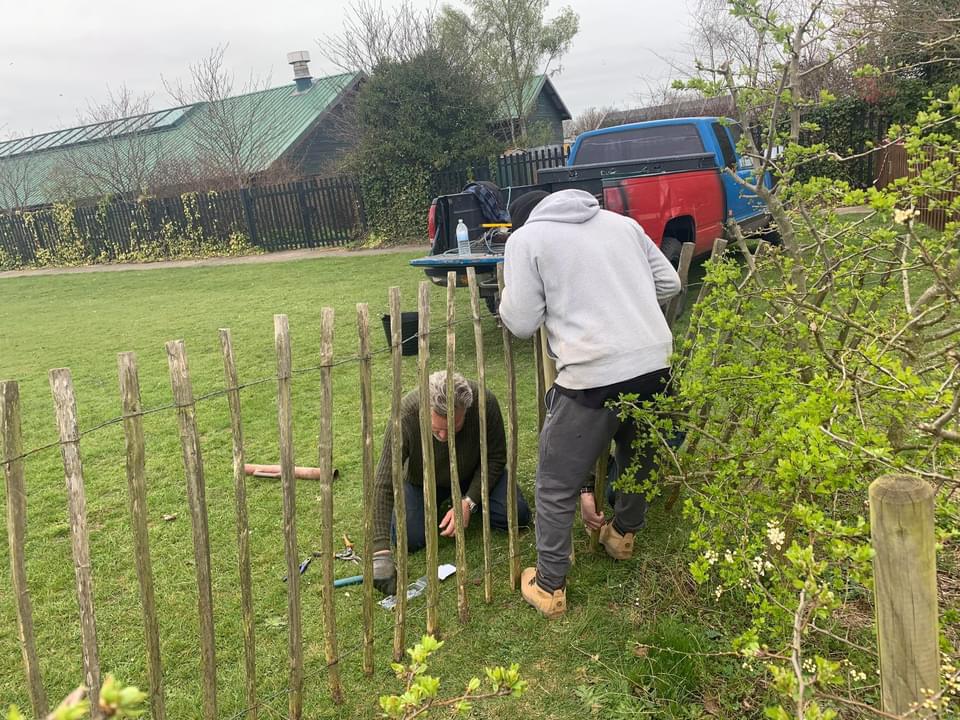Urban Greening - How To Make Our Schools Wilder
Wilding our schools is a key component of the WildEast philosophy. We cannot protect something we do not know exists and educating our youngsters is where it starts. Ensuring our schools have space for wildlife makes for happier students, and teachers.
Katie Foster worked at the Warren School in Lowestoft for a number of years and with the help of both students and teachers, turned 20% of their playing field into a buzzing wild area. The rewards she says, have been ten fold.

Imagine for a moment that you feel overwhelmed by your environment: You can’t switch off from the sounds of other people talking or eating. You feel anxious and stressed when people move around you. You don’t know what they are going to do next, you don’t understand what they are saying most of the time. You can see the flicker of the lighting all the time and it’s too bright. The equipment in the room makes sounds that fill your mind up. There are patterns, textures and colours on the screens, the walls, the carpet that you cannot make sense of. And you have no way to say how you feel. You can’t tell anyone you feel scared or anxious or overwhelmed because you don’t even know what it is. You just have a feeling. You want to feel better but you don’t know and you cannot communicate how.
Then you get to go outside. The intensity is gone. The sounds of other people talking are soothed by the wind. The colours are greens and blues. The textures are whispery and quiet. There’s no equipment. No wires. There are soft gentle patterns and sounds like the grass moving, birds flying in the sky and clouds drifting. And there is space: If you don’t want to be with people you can move away, you can find an open space to see the sky and the earth or you can find a little space in the trees or grasses where it is dark and quiet. You can move and travel across the space or you can be still and rest.
Warren School, for children with severe learning difficulties such as non-verbal Autism, pledged a section of playing field to the WildEast. It contains a pond, fruit trees and bug and frog hotels. In spring 2021 the perimeter fence was moved to extend the area of grass that is uncut by Suffolk Grounds services. First alpines grew among the grass, which fascinated the children and then the grasses grew tall and feathery with seeds, so were fun to run through and hide in.

The area is called the Harry Cole Outdoor Classroom and is dedicated to a little boy who died unexpectedly in the Autumn of 2020. Harry, like many children, was happiest when he was in a natural environment. He loved sitting still and watching the birds come to the feeders, he loved picking fruit from the trees and he would share these experiences with his friends and adults. He would name robins, he would show an adult an apple, he would play chase with his friends through the pathways between the trees. His Mum, Hannah, continues to add to the Wild area in memory of Harry, recently planting saplings along the fence line with a group of Harry’s friends.
I used to teach at Warren and have worked with Children with Special needs for twenty years. Currently, I am working in Great Yarmouth with boys who have Social, Emotional and Mental Health issues.
As cognitively able, emotionally literate adults we all know and are able to articulate the benefits of being in a natural space. Schools who pledge to the WildEast are able to support rewilding, nature regeneration and bio-diversity. But there are also enormous gains for the children, staff and families, as seen at Warren School.
It is difficult to adequately put into words the difference that being in a natural, unconstrained space where nature is present can make to children who are struggling with their mental health or learning. To be able to provide natural, wild spaces for all children is so important. This week, at my new school, we walked to the dunes on the North Denes in Yarmouth. The boys were safe to run away from the adults as the cold, rough sea could stop them far better than we could. We found a sea louse and saw a baby seal. Once back in school, if I needed their attention I could begin by talking about these events. Wild spaces can be much more engaging than a whiteboard presentation or computer game and far, far better for children’s physical and mental well-being.
Educationalists, if you are reading, please pledge to The WildEast.

WildEast Blog

Powered by LocaliQ
Follow Us
SIGN UP FOR NEWS & UPDATES
Newsletter Sign Up
Thank you for signing up to our newsletter.
Please try again later.
Privacy / Terms & Conditions / Sitemap
